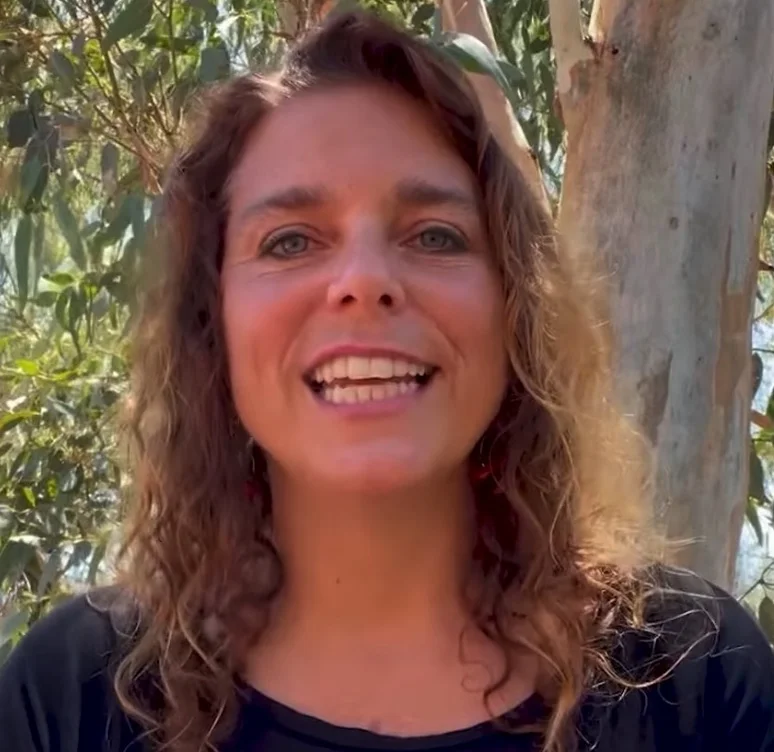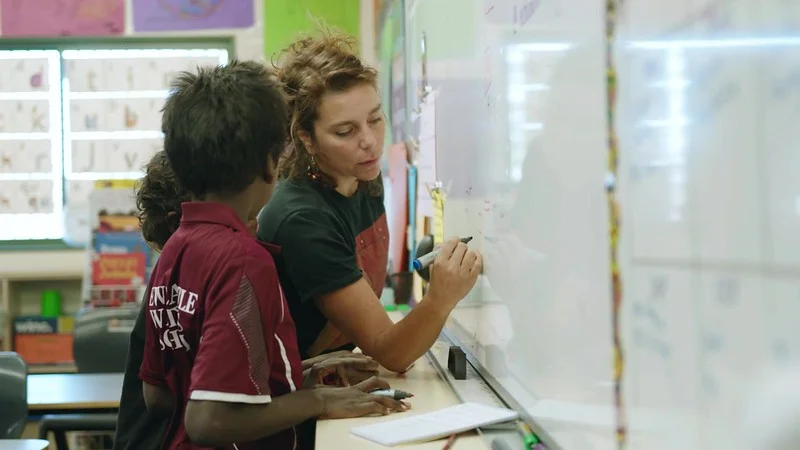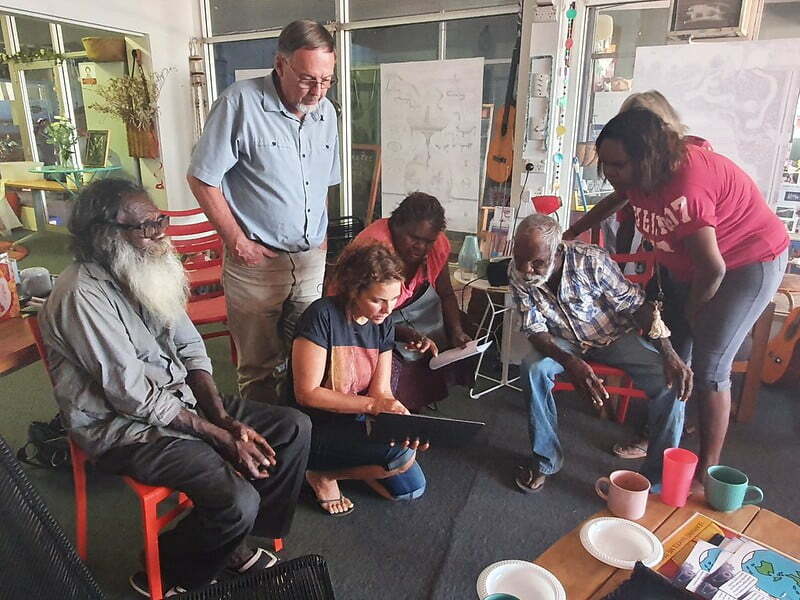Wide-ranging health benefits for Aboriginal and Torres Strait Islander people and communities are likely to flow from the work of a new organisation, the First Nations Clean Energy Network (FNCEN). In this news feature, Croakey Editor Cate Carrigan looks at some of the initiatives the FNCEN is using to drive change around the country and bring energy security to remote communities.
Tackling regulatory and policy barriers that block reliable, cheaper, clean-energy solutions for remote Aboriginal and Torres Strait Islander communities is a priority for the new First Nations Clean Energy Network (FNCEN).
With the COP26 summit backing renewables as a key to cutting global greenhouse emissions, the FNCEN wants to ensure the transition to clean energy is done in partnership with Aboriginal and Torres Strait Islander peoples and for their benefit, both socially and economically.
Bringing together First Nations organisations with business, unions, investment and energy consultants, the Network aims to forge alliances to deliver clean and reliable energy to communities, overcoming entrenched regulatory and policy hurdles to change.

Yorta Yorta woman Karrina Nolan, a key initiator of the Network and Executive Director of the Aboriginal-led community organisation Original Power, told Croakey energy insecurity was a long-term problem for remote communities, with climate change exacerbating those issues.
“We are seeing housing that is really not climate safe at a time when these communities are facing more days of extreme heat,” she said.
“In places where it gets to 45 degrees, some people can only afford to cool one room and then take it in turns to sleep.
“Some of our mob have to choose between keeping the power on or doing the shopping; keeping medicines and food cool in the fridge or being able to wash their clothes and their kids.”
One of those is Waramungu Elder and Tennant Creek Traditional owner Norman Jupurrurla Frank, a renal patient needing dialysis three times a week, who told Croakey recently the town’s pre-paid system is expensive and unreliable.
“Clean energy is the medicine that our people need. I dream of having solar on every house in town,” he said.
“We can get our people trained up to bring cheap energy from the sun, which unlike diesel or gas, will never run out and won’t hurt our country.”
Mr Jupurrurla had solar panels installed to overcome the issue but was waiting – weeks later – for Power and Water to connect them up. Now Nolan, who’s Original Power has been working with the electricity utility, is hopeful they’ll soon be switched on as part of a trial, that could be extended to thousands more homes.
It’s an example of the “collective power and influence” Nolan hopes the Network will create to highlight problems and achieve national change.

Three pillars
Providing networks, training and resources, the FNCEN is built around three key pillars: enabling communities to drive project development; developing industry partnerships to implement best practice principles to underpin agreements; and policy reform to address federal and state regulatory barriers.
At the 60-strong community of Marlinja in the Northern Territory’s Barkly Tablelands, Mudburra community leader Ray Dimakarri Dixon has been working to transition his community from diesel to cheaper solar power and battery storage, with the project due for completion in April 2022.
The community centre, which serves as a home to a visiting medical clinic, a gathering and meeting place and as emergency accommodation to families during frequent power outages, has now been fitted with solar panels, slashing power bills.
Dixon told Croakey he’s hoping to have solar panels installed on every house in the town to provide cheaper, cleaner, more reliable power.
“It’s the best way to go and the money saved can go to food and medical bills. I am very excited about it,” he said.

Best practice
Thomas Mayor, a Network steering Committee member and Maritime Union of Australia national Indigenous officer, stressed the need for the FNCEN to share stories of best practice, pointing to a history of Aboriginal and Torres Strait Islander exploitation since colonisation.
The cattle industry had enslaved people, pearlers forced native women to dive for them and mining companies continued the poor treatment, he said.
“As this clean energy revolution takes off and projects begin on Indigenous land, the Network will help us achieve the best possible outcomes for projects being built on Country.”
Mayor had witnessed firsthand the way companies establishing industry on Aboriginal and Torres Strait Islander land “make all sorts of promises and don’t follow through”.
“I have seen them divide communities as a way of ensuring less benefits go to the community and that more profits are made for the company,” he said.
“This is a chance to reset and for the clean energy industry to do the right thing.”

Green hydrogen plans
Along Western Australia’s south coastline, negotiations are underway for a massive green energy project seen as a possible best practice example for achieving benefits for Traditional Owners and remote communities.
The multi-billion-dollar green hydrogen project on the country of the Mirning people would stretch west across the Nullabor towards the mining towns of Kalgoorlie and Boulder and the coastal town of Esperance.
Leslie Schultz, a Ngadu Elder and Native Title holder and chair of the Ndagu Conservation Aboriginal Corporation, is part of the team negotiating with CWP Global and Hong Kong-based Intercontinental Energy, the proponents of the 15,000-square-kilometre Green Energy Hub.
Although still in its early days, Schultz is hopeful the project will provide substantial social and economic opportunities for his people and be an example that others can use.
“This is a big project and part of the green energy revolution that’s beginning in Australia, and we’d like to see good outcomes for all First Nations people across the country,” he said.
Schultz said the negotiating team were prioritising Homeland concerns, making sure the communities were listened to and decisions weren’t rushed.
“Having that control and getting it going at our pace is what we see as very important and it’s a good lead for other Nations that want to engage in these projects.”
It was a steady process to build the business arm, making sure the team is using the best lawyers, and economists available, Schultz said.
Culture and heritage were important aspects of the negotiations, with Schultz saying, “we want our language included – in signage and street names – and heritage sites preserved”.
Key to this was having the best heritage professionals working with communities to identify sites of importance and put in place strategies to protect them.
“We are putting together a strategic land management plan with boundaries for where the project can and can’t go because we don’t want our land trashed.”
The negotiating team wants to ensure any extra population brought in as the project develops is managed and that sensitive places, such as beaches and caves, are protected.
Schultz stressed the importance of the FNCEN, saying “it’s very important that we as a people continue to build on our networks as the green revolution comes our way”.
“We have land that a lot of industry want and with good partnerships we can get a lot of social return for our people, better health and education services and more jobs,” he said.
“Our peoples can get the comforts of good economic returns and get out of the vicious cycle that First Nations people wake up to every day.”
Schultz urged all First Nations people to become members of the FNCEN to access knowledge and expertise, and stop them having to “reinvent the wheel” when they enter negotiations.
The Network – working as a collective across Australia – could ensure “there are no rip-offs” of Indigenous people who are not used to dealing with such projects.

Investment and innovation
Mining engineer Chris Croker, a descendant of the Luritja people of the Central Desert and managing director of Impact Investment Partners (IIP), is working with eight Indigenous communities to develop solutions to energy insecurity and says regulation and policy reform can make change difficult.
One of those projects is developing a solar microgrid at Ltyentye Apurte (Santa Teresa), 100 kms south of Alice Springs, which gets its power via a thin transmission line from the city and is susceptible to power outages (over 20 were reported in both 2019 and 2020).
“This has a huge impact on livelihoods, welfare, kids, the elderly and people who require health services and medication,” he said.
Croker said IIP had been working with the community on solutions and that policy reform was needed to allow the town to take responsibility for generating its own power.
“The Network can really help with this, working to get the policy changes required to enable self-empowerment by community groups.”
If regulation and policy can be changed, Croker believes more investment could be attracted to help drive projects in communities.
“There’s not a shortage of companies interested in investing in renewable energy, green energy technology and infrastructure.”
Croker said barriers to community and third-party investment in Indigenous settings included responsibility for service delivery, which is currently controlled by government-owned utilities.
“There is not a mechanism for private investors, be they Indigenous or third-party, to actually come in and deliver better solutions,” he said.
Croker said FNCEN wanted to encourage investment and innovation, giving Indigenous groups a more inclusive role in the renewable energy industry.
“Indigenous groups hold either freehold or native title rights over a vast area of land. Better working relationship with investors and industry will open opportunities to enjoy greener, cheaper electricity, create more jobs and lead to better healthcare in communities.”
Partnerships

Ruby Heard, an electrical engineer and descendant of the Djrau people of the Southern Kimberley region of WA, runs Alinga Energy Consulting, which focuses on remote and off-grid applications.
Over the last 12 months, Alinga has been working on feasibility studies in remote Kimberley communities: assessing energy supply, affordability, and reliability, and focusing on replacing dirty, diesel-powered equipment and generators with clean energy alternatives.
Like Coker, Heard is hoping the Network will be able to help Alinga achieve results for communities by addressing regulatory hurdles.
“One of the big barriers for us is in the regulatory and political sphere and that’s outside of where I operate,” she said.
“We need partners that can work with government and make sure the technical solutions can be put in place in communities within the regulatory framework.”
Heard said each community was unique, was supplied by different entities and governed under different structures – and that was the challenge of the work.
While Heard views solar panels and renewables as a big piece of the solution puzzle, so too is energy efficiency and ensuring houses are built for the conditions.
“Most of the housing is supplied by government or mining companies (dongas) and has really bad thermal performance.
“It’s like trying to heat and cool a sieve – very difficult.
“We need to look at how we can improve the thermal performance of the buildings, which will decrease how much electricity is needed for heating and cooling.”
Heard is passionate about people hearing the stories of those in remote communities. “A lot of people have no idea of the energy challenges faced by people in remote communities. They aren’t aware that people in Australia struggle like this.”
Jobs boost
The MUA’s Tom Mayor said in helping drive partnerships between Indigenous communities, investors, and business on renewable energy projects, the FNCEN would help boost jobs and training in communities in addition to securing clean, reliable power.
Many challenges are involved, including: government inaction on regulation and lack of support for renewables industry; and a government and industry tendency to take the easiest and cheapest path with little benefit to communities.
However, Mayor is hopeful of change.
“That is why a network that builds power to ensure that we are listened to and have leverage is the most important thing,” he said.

Chief instigator of the FNCEN Karrina Nolan knows the work can’t be done overnight but has welcomed the “overwhelmingly positive response” since its November launch.
“We won’t be able to solve all the problems at once, but we will work with our partners to tackle the issues one at a time.”
Nolan pointed to large-scale collaborations currently underway in the NT and the green hydrogen proposal on Mirning Country, and smaller projects such as solar microgrids at Ltyentye Apurte (Santa Teresa) and a similar project at Borroloola.
In Victoria, some Traditional Owners were working to establish their own solar farm and put solar on community-owned buildings.
“We’ve actually worked out how much it would cost to put solar on every house in the NT and we could also look at what it would take nationally. It’s not that difficult,” she said.
“There are some technical issues and other barriers but if we come together and work out what it would take, it can be done.”
Nolan said the FNCEN was drawing inspiration from the First Nations people of Canada, who had more than 2,000 small-scale projects and 200 medium to large-scale ventures underway. All of the projects are owned or controlled by First Nations peoples.